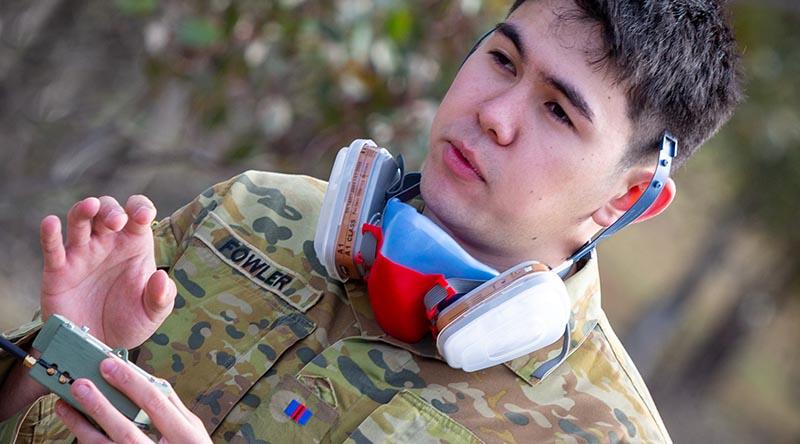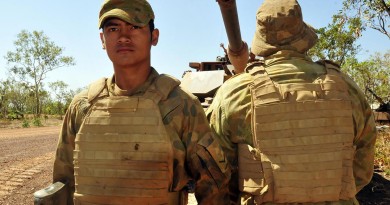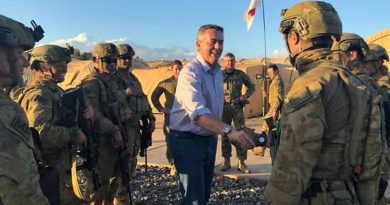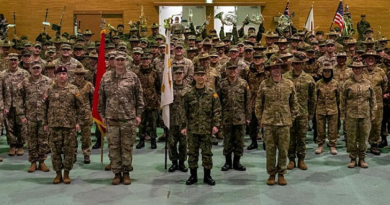Staff cadet invents chemical-threat Canary Sensor
Share the post "Staff cadet invents chemical-threat Canary Sensor"

Army Staff Cadet Oscar Fowler has developed a prototype for a sensor that can detect harmful gases, which could one day have military and civilian uses.
CAPTION: Army Staff Cadet Oscar Fowler from the Royal Military College Duntroon explains his prototype chemical-threats sensor. Photographer unnamed.
The Canary Sensor is so named because of the old practice of having a canary in a mine shaft to warn miners of the presence of toxic gas, particularly carbon monoxide.
In that practice, the alarm to evacuate the mine shaft was raised when the canary became ill or died.
Staff Cadet Fowler’s idea, though, is well and truly alive, and the prototype was tested earlier this year.
The prototype sensor uses electrochemical sensors to detect harmful gases and vapours, and can be deployed remotely using technology such as drones.
Staff Cadet Fowler will develop the prototype so it can alert personnel on the ground to toxic threats via wearable technology, giving operational planners the ability to test the air before sending in troops, or alerting frontline soldiers when they need to move away from contaminated air.
He said the technology, once fully developed, could also have uses in natural disasters, chemical spills or ruptured pipelines, and he was looking at ways the sensor could be used by firefighters.
It was a visit to a combat engineering unit while he was studying at ADFA that inspired the idea for the Canary Sensor.
Staff Cadet Fowler said he checked out the equipment used for chemical analysis and noticed there weren’t many devices that could be used for immediate threat detection.
“I came up with a goal to develop a reliable device providing real-time threat mitigation for operators and planners, similar to the canaries used by miners in the past,” he said.
Staff Cadet Fowler, currently at RMC Duntroon, submitted a research proposal that came to the attention of the Director of the air force’s Plan Jericho Group, Captain Lyle Holt.
RAAF has an innovation program called Edgy Air Force, which encourages its personnel to design and prototype new technologies.
“We knew Staff Cadet Fowler had a great idea, we knew it should get to prototype and we had a fair idea that it would be successful,” Group Captain Holt said.
“We just needed to work out how to get him (Staff Cadet Fowler) involved.”
Army was supportive of Staff Cadet Fowler joining the [Royal Australian] Air Force program.
Staff Cadet Fowler spent five months working in Plan Jericho’s Canberra lab, with the plan’s partner, The Creative Element, where he received one-on-one support from industry and academic experts.
The prototype was tested earlier this year at Majura Range, Canberra, in front of senior Army and RAAF officers.
The trial highlighted some issues with the sensor, but Staff Cadet Fowler said the results would allow him to develop the technology further.
Director of Military Arts at Royal Military College Duntroon Colonel Chris Alder said the development of the Canary Sensor prototype was a great example of joint force development − Army and RAAF working effectively together to develop really cutting-edge technology.
“This project has proved that ideas can come from every level in our force,” he said.
“We are passionate about empowering people to think creatively.”
.
.
.
.
.
.

.
.
Share the post "Staff cadet invents chemical-threat Canary Sensor"





